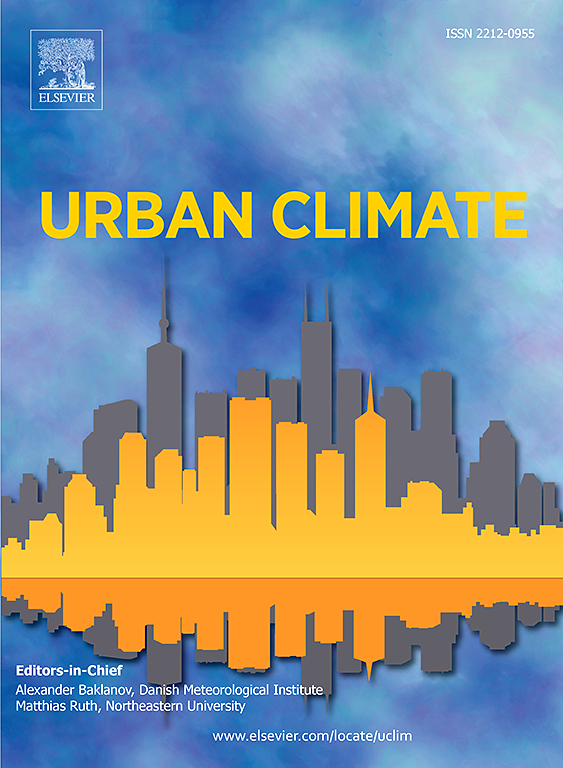Impacts of urban dynamics and thermodynamics on convective rainfall across different urban forms
IF 6
2区 工程技术
Q1 ENVIRONMENTAL SCIENCES
引用次数: 0
Abstract
Urban areas have been shown to impact convective rainfall over or near them. However, predicting the urban rainfall effect across different cities remains challenging because it is unclear which urban properties are the main drivers of rainfall modifications. Here, we simulate 11 summertime convective rainfall events with the Weather Research and Forecasting (WRF) model that occurred in Indianapolis, Indiana. To isolate the role of urban form, we replace the urban footprint of Indianapolis with those of eight other cities to assess links between different urban forms and urban rainfall effects. We also perform sensitivity tests to examine whether building density relates to the urban rainfall effect. Out of the simulated rainfall events, half intensified while passing over the cities, and half were suppressed. Rainfall intensification occurred when background wind speeds were low and the urban heat island effect was strong, resulting in increased vertical uplift and a deeper boundary layer, which enhanced convection. We find that urban rainfall intensification effects are the largest over the city cores and in their downwind boundaries. In contrast, convective rainfall was suppressed when background wind speeds were high, and the urban heat island effect was weak. In these cases, the strength of vertical uplift and the height of the boundary layer were reduced, inhibiting convection due to reduced moisture in the boundary layer and large deceleration effects at the surface due to the increased surface roughness of urban areas. While the magnitude of the changes in rainfall intensity tends to be related to city size, no relationship was found with its building density.
城市动力学和热力学对不同城市形态对流降雨的影响
城市地区已被证明会影响其上方或附近的对流降雨。然而,预测不同城市的城市降雨效应仍然具有挑战性,因为尚不清楚哪些城市属性是降雨变化的主要驱动因素。在这里,我们用天气研究与预报(WRF)模型模拟了11个发生在印第安纳州印第安纳波利斯的夏季对流降雨事件。为了隔离城市形态的作用,我们用其他八个城市的城市足迹代替了印第安纳波利斯的城市足迹,以评估不同城市形态和城市降雨效应之间的联系。我们还进行了敏感性测试,以检验建筑密度是否与城市降雨效应有关。在模拟的降雨事件中,一半在经过城市时增强,一半被抑制。背景风速低、城市热岛效应强时,降水增强,垂直隆升增加,边界层加深,对流增强。研究发现,城市降雨强化效应在城市核心及其下风边界处最大。背景风速较大时,对流降水受到抑制,城市热岛效应较弱。在这些情况下,垂直隆升强度和边界层高度降低,由于边界层水分减少而抑制对流,而由于城市地区表面粗糙度增加而在地表产生较大的减速效应。降雨强度的变化幅度与城市规模有关,而与城市建筑密度无关。
本文章由计算机程序翻译,如有差异,请以英文原文为准。
求助全文
约1分钟内获得全文
求助全文
来源期刊

Urban Climate
Social Sciences-Urban Studies
CiteScore
9.70
自引率
9.40%
发文量
286
期刊介绍:
Urban Climate serves the scientific and decision making communities with the publication of research on theory, science and applications relevant to understanding urban climatic conditions and change in relation to their geography and to demographic, socioeconomic, institutional, technological and environmental dynamics and global change. Targeted towards both disciplinary and interdisciplinary audiences, this journal publishes original research papers, comprehensive review articles, book reviews, and short communications on topics including, but not limited to, the following:
Urban meteorology and climate[...]
Urban environmental pollution[...]
Adaptation to global change[...]
Urban economic and social issues[...]
Research Approaches[...]
 求助内容:
求助内容: 应助结果提醒方式:
应助结果提醒方式:


